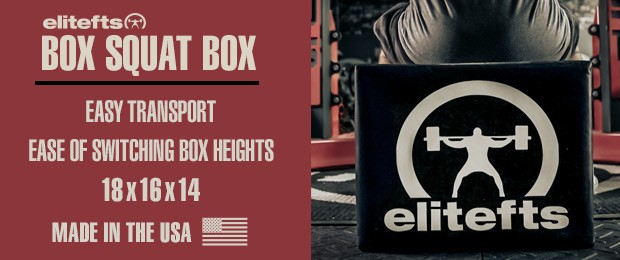
In my career, I have always been looking to be able to advance speed, power, and strength as far as possible in athletes. I am very proud of what I’ve been able to do over the course of my career. As I have gotten further into my career as a coach and a researcher, I have seen some phenomenal strength coaches at the lower levels. This made me beg the question, what is the difference between the athletes at these different levels? Well, racks and barbells may be a bit newer at the larger schools, but 315 pounds is always 315 pounds to quote Henry Rollins. What is it that made the Division 1 athlete a Division 1 athlete?
In this article, I’d like to present some research that we did examining a BCS Division 1 University and an NAIA University that existed within 15 miles of each other 1. We examined the countermovement jump while performed on force plates. While there are many other tests that both universities performed for their athletes, several differences existed, which precluded us from analyzing that data. For instance, when sprints and change of direction tests are performed on different surfaces, they will lead to different scores. For the strength numbers, squat depth may have been different for the two sets of coaching staffs, the surfaces for standing long jump were also different, so that caused them to be different. For standardization purposes, the same force plates and software were utilized and were placed on a double-layered wooden underlayment to ensure the same surface for jumping.
While both universities did include national and international athletes, their proximity allowed for the athletes to face the same daily environmental concerns. Also, both universities had many local athletes, and in many cases, these athletes were either on the same club or school teams prior to entering college athletics. The data was matched for sports, meaning that only sports that both universities has (or had tested) were included in the analysis. Table 1 allows us to look at the demographic information, and we can see that the athletes were close to the same. The sports were baseball, softball, basketball, women’s soccer, tennis, swimming, and diving.

There is some discrepancy in the data as some athletes transfer or quite soon after coming to a university. This happens a great deal more often at the NAIA level than at the Division 1 level. At Division 1, most athletes there are on a scholarship, which has major financial incentives for them to stay at the university. At NAIA, the level of support is not the same, and if someone does not like what is going on, they may choose to quit without suffering financial ramifications as the scholarship athlete would. We see that there are no significant differences between the males for age or height, and they were of similar weights too. For the female group, the Division 1 athletes were a bit taller and heavier, but these differences were relatively small, about 4cm in height and 2kg in weight. I had always assumed that smaller level athletes were good athletes who were just smaller. This does not appear to be the case from our data.
An examination of the data exists in Table 3 from the paper. We can look and see that for the females, Division 1 showed a greater jump height, peak power, and rate of power development at 100ms. So we see a clear difference existing between females, with the Division 1 being able to jump higher, with more power, and produce power more quickly. For the males, we see that a clear difference doesn’t exist, while Division 1 males did jump slightly higher (1.4cm, or just a little over a half an inch) and produced more power (about 350W), the NAIA athletes actually did so more quickly. Peak power was the only variable that was found to be significantly different in men, although it was not denoted in this graph. The difference in peak power may well be simply because the Division 1 men were heavier than the NAIA, so any minute difference in height may be magnified.

We cannot say with any certainty if there are differences that exist in other tests. As mentioned previously, it is tough to say with any clarity about the differences between levels and tests due to the differences in conditions (surfaces, lifting standards, etc.). For instance, in a paper that is currently under review we found that there was no statistical difference in sprint speeds on two different surfaces that we utilized at one school (several years on astroturf and several years on field turf). Still, there was a significant difference in the agility tests performed on those surfaces. This makes it difficult to interpret differences in data. It may be possible to determine regression equations to convert the data, but that would require a lot of work that I don’t know if I have the time, energy, or, quite frankly, the desire to do. To be quite honest, I also noticed a difference (anecdotally only) when practicing and playing on different types of grass with different cuts of grass. There are degrees in a field called Turfgrass Management which is about the development of the grass to fit certain needs. My point to all of this is that when tests are taken on different surfaces, don’t just take them at face value and say one was better than the other. There is a lot of context that needs to be provided. I believe it is useful to have an idea of “what is good for this type of athlete,” but to make decisions on outcomes is not warranted.
What does that indicate to us? For one, it tells us that the difference in men between the levels is not great. The men in Division 1 are not taller but are a bit heavier. We did not include body composition as one group was done by calipers and the other group by DXA, so it is unknown if the difference in weight was due to muscle mass or adipose tissue. For the vertical jump movement, it may just indicate to us that if someone is physically prepared enough for college, they are physically prepared enough for college (regardless of the level for these sports — football was not one of these sports, so this can not be inferred. It may well be that for these sports, after the requisite amount of strength training led to adequate power, doing more did not enhance the results. This may well be a result of many high schools now having strength and conditioning (S&C) programs led by qualified individuals performing proper S&C programs with the students. This will increase their strength and power and lead to a decrease in subsequent gains from generalized training. This is not really a problem; it is a good thing that coaches in the college ranks are getting more developed athletes.
The women tell us a different story. The Division 1 women jump higher, are more powerful, and produce power more quickly with only a marginal difference in body mass. This indicates that there is a physical difference between the two ranks of athlete. With this marked difference, the question becomes, “Why is there such a difference between the two genders for college athletes? Men are mostly the same at both levels, but women at the Division 1 tend to be much more powerful.” This may come from historical reasons with high school S&C. I know that for men’s sports in high school, it was nothing for them to be required to lift weights even back in the mid-90s (I graduated high school in 1997). It is my understanding that even if a high school has S&C, it is up to the sport coach if their team participates in strength training. It appears, from who I have spoken with, that women are less likely to have participated in one of these programs. Those who are more serious about their sport are more likely to have participated in S&C, and Division 1 is more likely to have those who are serious about their sport than those who did it for recreation. It appears that women are more likely to get improvements from basic S&C than men for those reasons. Someone stronger and more powerful may be able to out “physical” their opponents who may be technically superior. Since there are fewer women’s teams who utilize S&C, there is a bigger advantage to be gained by those who do.
An example I propose for this is when I had the Women’s soccer team from 2007 to 2008 at Missouri, where we won back to back Big 12 championships. I had eight ladies who could perform repetitions with 200 pounds or greater on the back squat. From a coaching standpoint, we did not necessarily have the most technically skilled team of who we played against (North Carolina, for instance). However, we led the nation in fouls, and we played VERY physically on the field (which is evident by leading the nation in fouls). We lived by the mantra, "You may win, but you will bleed." Our levels of strength and power were far higher than our opponents at that time and made up for areas where we were not as technically proficient. I think this is what may be garnered here. Those who are talented AND trained ended up in Division 1 with greater regularity.
My good friend and founder of the NHSSCA Gary Schofield said, “I would say the females that did train stood out by far on the field. I would relate that to the early days of S&C where you could correlate squat, clean, and bench numbers with wins on the football field. Today, that correlation is not there. I believe that is because now almost all high school teams strength train.”
So then, what am I saying? That S&C isn’t important? No. That can’t be further from the truth. What I will say is this: The advantage gap that S&C provides has decreased. We can’t say that having x number of 400- or 500-pound squatters will give you more wins, everyone has that. I believe the advantages now lie in finding how to continue to get transfer to speed, change of direction, jumping ability, improvements in executive function, etc. Get them to the requisite levels and realize that going beyond 2.2x bodyweight on a deep squat will not elicit further performance. Maybe there are other exercises or training regimes that will allow you to get the edge. The determinants of what are weaknesses that will impact sport are increasing, and those who can understand how to get those gaps filled the best will become the next Nebraska Cornhuskers of the 1980s and 90s.
References
- Stahl C, Lindsay K, Mann J, ‡ M, Dawes J. A Comparison of Lower Body Power Characteristics Between Collegiate Athletes from Different Competition Levels. 2020;13:470-479.











1 Comment